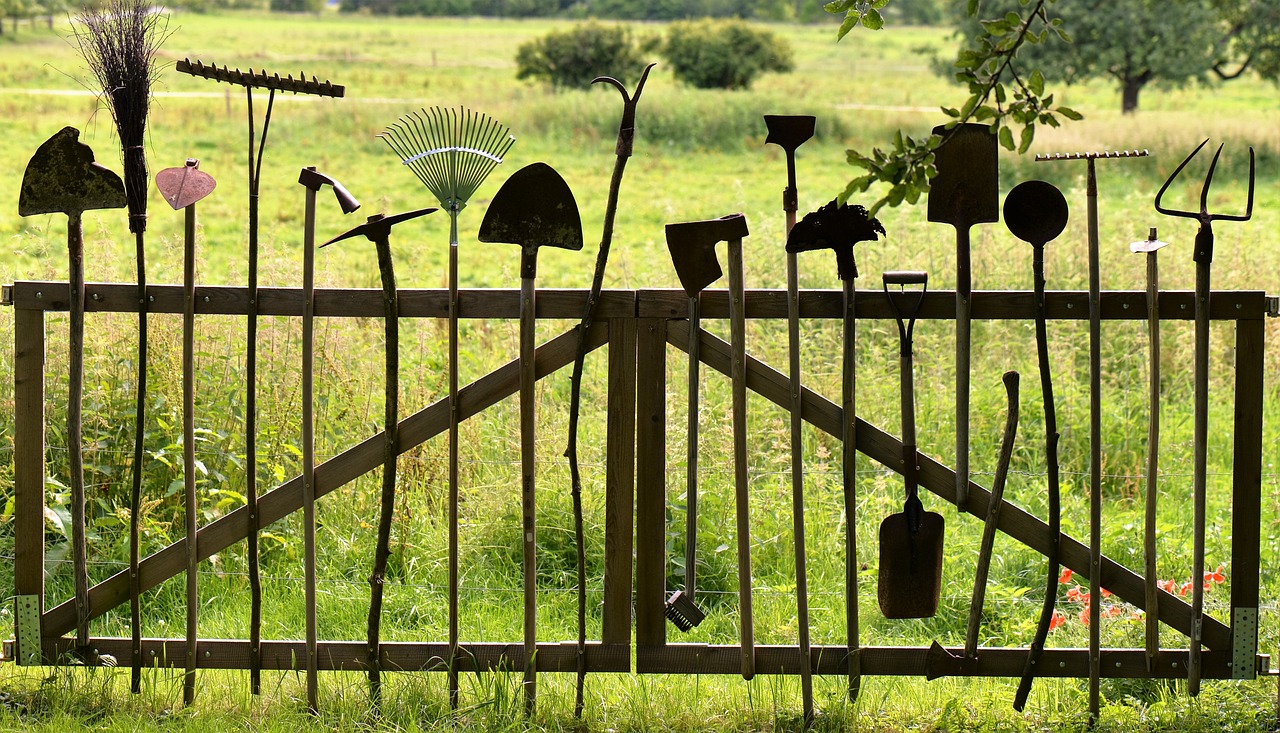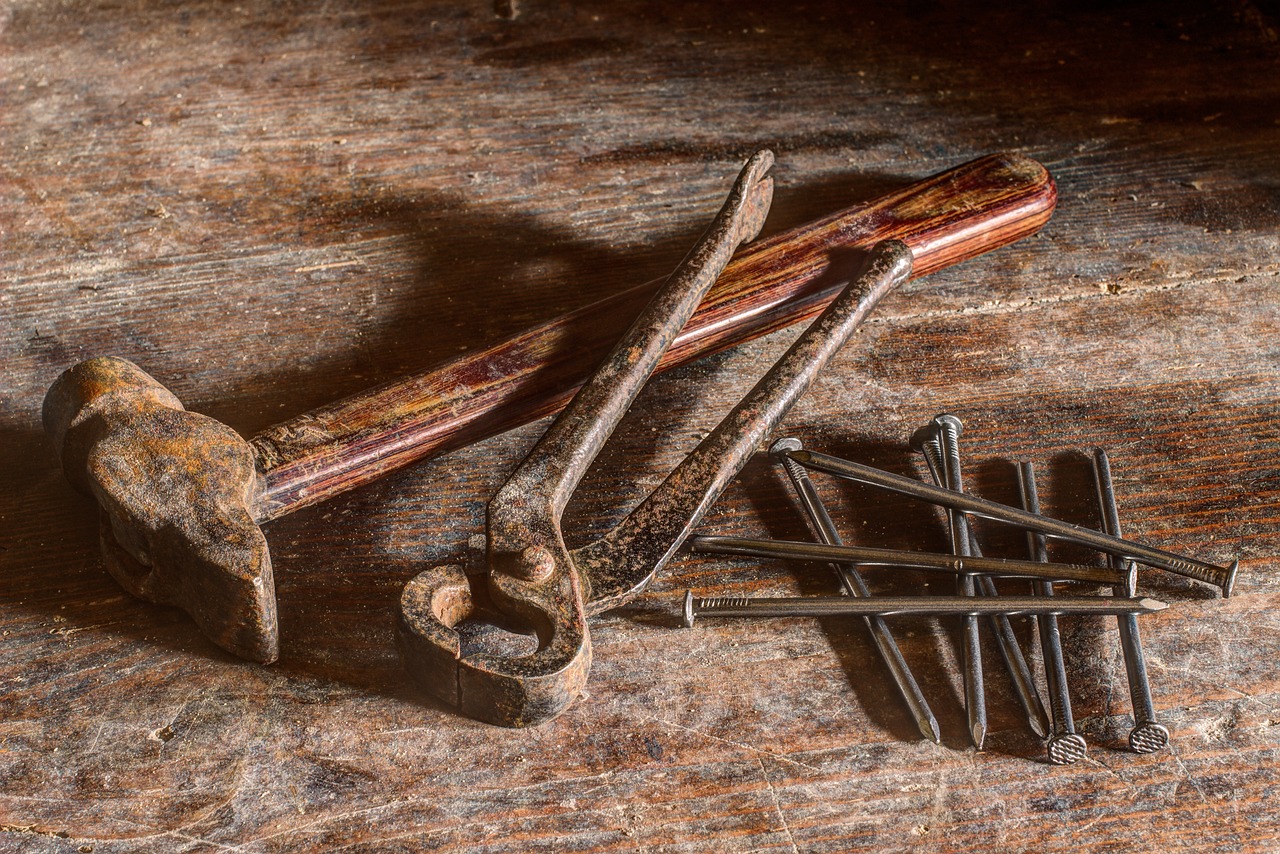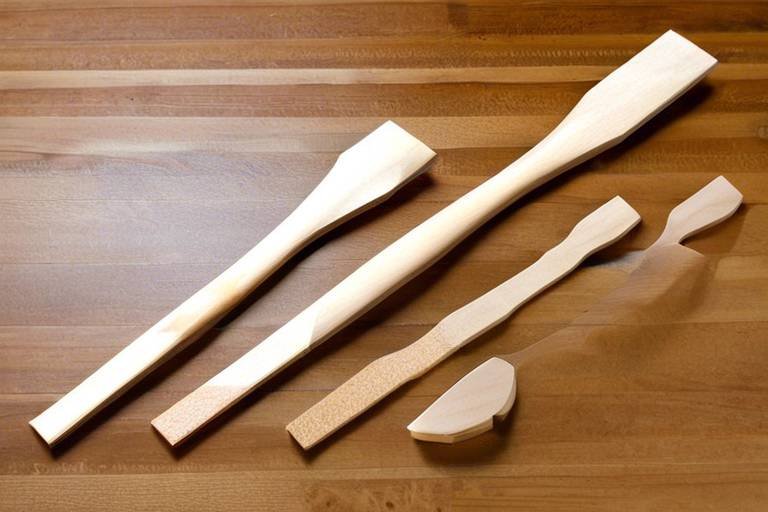How to Make a Wooden Laptop Stand: Step-by-Step Guide
Creating a wooden laptop stand is not just a fun DIY project; it's a fantastic way to enhance your workspace ergonomics. Imagine being able to elevate your laptop to eye level, reducing neck strain and improving your posture—all while showcasing a beautiful piece of craftsmanship that you made yourself! In this comprehensive guide, we'll walk you through every step of the process, from selecting the right wood to assembling and finishing your stand. So, roll up your sleeves and let’s get started on this exciting journey!
Selecting the appropriate type of wood is crucial for both durability and aesthetics. You want a material that not only supports the weight of your laptop but also looks great on your desk. Here are a few popular options:
- Oak: Known for its strength and attractive grain, oak is a fantastic choice for a sturdy stand.
- Pine: A more affordable option, pine is lightweight and easy to work with, making it perfect for beginners.
- Maple: This hardwood is dense and durable, providing a smooth finish that can elevate the overall look.
When choosing wood, consider factors like grain pattern, color, and how well it complements your existing workspace. Remember, the right wood can make all the difference!
Before diving into the construction, it’s essential to gather all necessary tools and materials. Having everything on hand will ensure a smooth building process. Here’s what you’ll need:
To construct your laptop stand, you’ll require a few basic tools. Here’s a rundown of the must-haves:
- Saw: A circular saw or hand saw will work for cutting the wood to size.
- Drill: Essential for making holes for screws or dowels.
- Measuring Tape: Accurate measurements are key to a well-fitting stand.
- Sander: To smooth out the edges and surfaces for a polished look.
When it comes to tools, you have a choice between power tools and hand tools. Power tools can save you time and effort, but they require a bit of a learning curve. Hand tools, on the other hand, offer more control and precision, especially for intricate cuts. Consider your comfort level and the complexity of your design when making your choice.
Here’s a detailed list of materials you’ll need:
| Material | Quantity |
|---|---|
| Wood (Oak/Pine/Maple) | 1 board (1"x6"x36") |
| Screws | 8-10 screws |
| Wood Glue | 1 bottle |
| Finish (Stain or Sealant) | 1 can |
Preparation is key to a successful build. Start by measuring your wood pieces accurately according to your design. Use a saw to cut the wood to size, ensuring that your cuts are straight and clean. After cutting, it’s time to sand your pieces. Sanding not only smooths out rough edges but also helps the finish adhere better. Remember, a little extra time spent in preparation can save you headaches later on!
Now that you have your materials ready, it’s time to assemble your laptop stand. Follow these detailed steps to ensure a successful build:
Different joining techniques can affect the stability and appearance of your stand. You can use screws for a straightforward approach, or dowels for a cleaner look. Whichever method you choose, make sure to drill pilot holes to prevent the wood from splitting.
Once your stand is assembled, it’s time to add the finishing touches. Sand any rough spots, then apply your chosen finish—be it stain or sealant. This step not only enhances the aesthetic appeal but also protects the wood from wear and tear. Take a moment to admire your handiwork!
Q: How long will it take to make the laptop stand?
A: Depending on your skill level and the complexity of your design, it can take anywhere from a few hours to a full day.
Q: Can I customize the design?
A: Absolutely! Feel free to modify the dimensions and style to suit your personal taste and workspace.
Q: What if I don’t have power tools?
A: No worries! Hand tools can do the job just as well, although it may take a bit more time and effort.
Q: How do I maintain my wooden laptop stand?
A: Regularly dust and clean the stand, and reapply finish as needed to keep it looking its best.

Choosing the Right Wood
When it comes to creating a wooden laptop stand, is more important than you might think. The type of wood you select not only influences the durability of your stand but also its overall aesthetic appeal. Imagine your laptop stand as the stage for your tech; the right wood will enhance its beauty and functionality. So, let’s dive into the world of wood and explore your options!
First off, you have to consider the characteristics of different types of wood. Some woods are naturally more robust and can withstand the weight of your laptop better than others. For instance, hardwoods like oak, maple, and walnut are incredibly popular choices because they offer excellent strength and durability. They can handle the daily wear and tear that comes with being a laptop stand. On the other hand, softwoods like pine or cedar may be easier to work with, but they might not stand the test of time as well as their hardwood counterparts.
Another factor to consider is the finish. Different woods take stains and finishes differently, which can dramatically affect the final look of your stand. For example, walnut has a rich, dark color that looks stunning with a simple clear finish, while pine can be stained in various shades to match your decor. If you’re looking for a more rustic feel, reclaimed wood could be an excellent option, adding character and uniqueness to your project.
Here’s a quick overview of some popular wood options:
| Wood Type | Durability | Appearance | Workability |
|---|---|---|---|
| Oak | High | Rich grain, light to dark | Moderate |
| Maple | High | Light color, fine grain | Easy |
| Walnut | High | Dark, rich tones | Moderate |
| Pine | Moderate | Light color, knots | Easy |
| Cedar | Moderate | Red hue, aromatic | Easy |
Ultimately, the best wood for your laptop stand will depend on your personal preferences and the look you want to achieve. If you’re aiming for a sleek, modern design, hardwoods might be the way to go. However, if you’re after a more rustic charm, consider using reclaimed wood or a softwood that can be stained to your liking. Remember, it’s not just about functionality; it’s also about creating a piece that reflects your style and enhances your workspace!

Gathering Tools and Materials
Before diving into the exciting world of DIY, it's crucial to gather all the necessary tools and materials for your wooden laptop stand project. Think of this phase as assembling your arsenal for battle; the better prepared you are, the smoother your journey will be. Imagine starting a recipe without all the ingredients—it's just not going to turn out right! So, let’s break down what you’ll need.
First up, you’ll need some essential tools that will make your construction process efficient and enjoyable. Here’s a quick overview of what to gather:
- Saw: A circular saw or a jigsaw will do the trick for cutting your wood into the desired shapes.
- Drill: A power drill is essential for making holes and driving screws.
- Measuring Tape: Precision is key! A measuring tape will help ensure your cuts are accurate.
- Screwdriver: You’ll need this for assembling your stand.
- Sandpaper: To give your stand a smooth finish, sandpaper is a must.
Next, let’s talk about the materials. The type of wood you choose can greatly affect the aesthetic and durability of your stand. Popular choices include pine, oak, and birch, each bringing its unique flair. For a sturdy build, you’ll also need some screws, wood glue, and possibly brackets to reinforce joints. Don't forget about the finishing materials, such as wood stain or sealant, to give your stand that polished look.
Here’s a simple table to summarize the essential tools and materials you’ll need:
| Tool/Material | Purpose |
|---|---|
| Saw | To cut wood pieces to size |
| Drill | For making holes and driving screws |
| Measuring Tape | To ensure accurate measurements |
| Screwdriver | For assembling the stand |
| Sandpaper | To smooth out the wood surfaces |
| Wood Glue | For additional joint strength |
| Finishing Materials | To enhance the appearance of the stand |
Once you have your tools and materials ready, you’ll feel a wave of excitement wash over you. It’s like standing at the starting line of a race, adrenaline pumping, just waiting for the signal to go. With everything gathered, you are now ready to embark on your woodworking adventure, turning simple pieces of wood into a functional and stylish laptop stand. Remember, the key to a successful project lies in preparation, so take your time to ensure you have everything you need before you begin.

Essential Tools
When embarking on your journey to create a wooden laptop stand, having the right tools at your disposal is crucial. Think of it as assembling your personal toolkit for success; without the right equipment, you might find yourself stumbling through the process. So, what do you need? Let’s break it down!
First and foremost, you will need a saw. A circular saw is ideal for making straight cuts, while a jigsaw can help with more intricate shapes. If you're looking for precision, a miter saw can be a game changer, especially when you're cutting angles for your stand. Next on the list is a drill. This handy tool will be your best friend when it comes to making holes for screws and dowels. Look for a cordless drill for added convenience and mobility.
Then, there’s the measuring tape. It might seem simple, but accurate measurements are the backbone of any woodworking project. You wouldn’t want your laptop stand to wobble, would you? A square is also essential for ensuring your cuts are straight and your joints are perfectly aligned. Lastly, don’t forget about sandpaper. A smooth finish can make all the difference in the final look of your stand, and sandpaper comes in various grits to help you achieve the desired texture.
Here’s a quick rundown of the essential tools you’ll need:
- Saw: Circular saw, jigsaw, or miter saw
- Drill: Cordless drill for versatility
- Measuring tape: For precise measurements
- Square: To ensure straight cuts and alignments
- Sandpaper: Various grits for a smooth finish
In addition to these tools, you might also consider having a clamp handy. Clamps are invaluable for holding pieces together while the glue dries or while you’re screwing them together. This ensures that everything stays in place, leading to a more stable and visually appealing stand. Lastly, a workbench or a sturdy table is essential for providing a solid surface to work on. Remember, a stable workspace leads to better results!
In summary, gathering these essential tools will set you up for success in creating your wooden laptop stand. Each tool plays a specific role, making the process smoother and more enjoyable. So, gear up, and let’s get crafting!

Power Tools vs. Hand Tools
When embarking on your DIY journey to create a wooden laptop stand, one of the first decisions you’ll face is whether to use power tools or hand tools. Each type has its unique advantages and disadvantages, and understanding these can significantly impact your project’s outcome. Let’s break it down!
Power tools are the superheroes of the woodworking world. They make quick work of tasks that could take hours with hand tools. For instance, a power saw can cut through wood in seconds, while a hand saw requires more physical effort and time. However, power tools can be more expensive and may require a certain level of skill to operate safely. If you’re someone who enjoys the thrill of speed and efficiency, power tools might just be your best friend!
On the flip side, hand tools have their own charm. They offer a level of precision and control that is sometimes hard to achieve with power tools. Think of it as painting a masterpiece with a fine brush versus using a roller. Hand tools are often lighter, easier to store, and can be more affordable for beginners. Plus, they allow for a more tactile experience, connecting you intimately with your project. If you appreciate the art of craftsmanship and enjoy the process as much as the result, hand tools will resonate with you.
Here’s a quick comparison to help you decide:
| Feature | Power Tools | Hand Tools |
|---|---|---|
| Speed | Fast and efficient | Slower, more labor-intensive |
| Precision | Can be less precise | High precision and control |
| Cost | Generally more expensive | Usually cheaper |
| Skill Level | Requires some training | More accessible for beginners |
| Portability | Less portable due to size | Highly portable and easy to store |
Ultimately, the choice between power tools and hand tools boils down to your personal preference, budget, and the specific requirements of your project. If you’re a beginner, starting with hand tools might be a great way to build your skills without overwhelming yourself. Conversely, if you have a bit of experience and want to speed up the process, investing in some power tools could be worthwhile.
Whichever route you choose, remember that both power and hand tools can coexist harmoniously in your workshop. Combining the strengths of both can lead to a more efficient and enjoyable woodworking experience, allowing you to create a stunning wooden laptop stand that you can be proud of!

Materials List
When embarking on your exciting journey to create a wooden laptop stand, having the right materials is essential for both functionality and aesthetics. You want your stand to not only support your laptop but also look great in your workspace. Here’s a comprehensive breakdown of the materials you’ll need to gather before you start building:
First and foremost, the most critical component is the wood itself. You can choose from various types of wood, each offering unique characteristics. Popular choices include:
- Pine: Lightweight and easy to work with, perfect for beginners.
- Oak: Durable and strong, ideal for a sturdy stand.
- Birch: Offers a fine grain and smooth finish, great for aesthetics.
In addition to the wood, you’ll need some hardware to hold everything together. This includes:
- Screws: For securing the joints.
- Wood glue: To enhance the stability of the joints.
- Wood finish: Such as varnish or stain, to protect and beautify your stand.
Don't forget about the tools that will make your project smoother! Here’s a quick table summarizing the essential materials and their purposes:
| Material | Purpose |
|---|---|
| Wood | Main structure of the laptop stand. |
| Screws | To securely fasten the wood pieces together. |
| Wood glue | To add extra strength to the joints. |
| Wood finish | To protect the wood and enhance its appearance. |
Lastly, you might want to consider some optional materials that can elevate your stand. For instance, using rubber feet can prevent slipping and protect your desk surface. Additionally, felt pads can cushion the laptop and add a touch of elegance. As you gather these materials, think about how they will contribute to the overall look and functionality of your laptop stand.
With all your materials lined up, you'll be ready to dive into the exciting process of crafting your very own wooden laptop stand. Just remember, preparation is key, and having everything at hand will make the construction process much more enjoyable!

Preparing the Wood
Before diving into the exciting world of woodworking, it’s vital to prepare your wood properly. This step is like laying the foundation for a house; if it’s not solid, everything else will crumble. Start by measuring your workspace and the dimensions of your laptop stand. A well-thought-out plan ensures that you cut your wood pieces accurately, avoiding any waste or mishaps down the line. Remember, "measure twice, cut once" is not just a saying; it’s a mantra to live by in the DIY community!
Once you have your measurements, it’s time to cut the wood. Use a reliable saw, whether it’s a hand saw or a power saw, to make your cuts. If you’re using a power saw, ensure you wear safety goggles and a mask to protect yourself from sawdust. After cutting, you’ll likely notice rough edges that can be a bit jagged. This is where sanding comes into play. Sanding not only smooths out those edges but also prepares the surface for any finishes you may want to apply later.
Here’s a quick breakdown of the sanding process:
- Start with coarse sandpaper (around 80-grit) to remove any rough spots.
- Gradually move to finer sandpaper (up to 220-grit) for a smooth finish.
- Always sand in the direction of the grain to avoid scratches.
After sanding, it’s crucial to clean the wood. Dust and debris can interfere with any stains or finishes you apply later. A simple wipe-down with a damp cloth should do the trick. If you’re feeling extra thorough, you can use a tack cloth to pick up any lingering dust particles.
Finally, consider the type of finish you want for your wooden laptop stand. This decision can greatly affect the overall look and feel of your project. You might opt for a natural oil finish that enhances the wood’s grain, or perhaps a stain that adds color while still showcasing the beauty of the wood. Whatever you choose, make sure to follow the manufacturer's instructions for application and drying times to achieve the best results.
In summary, preparing your wood is an essential step that sets the stage for a successful build. By measuring accurately, cutting carefully, sanding thoroughly, and choosing the right finish, you’ll be well on your way to creating a stunning and functional wooden laptop stand that not only looks great but also stands the test of time.
Q: What type of wood is best for a laptop stand?
A: Hardwoods like oak, maple, or walnut are excellent choices for durability and aesthetics.
Q: Do I need special tools for cutting the wood?
A: While a power saw makes the job easier, a good hand saw will also work if you’re careful.
Q: Can I use a stain on my laptop stand?
A: Absolutely! Staining can enhance the wood's appearance and provide a protective layer.

Step-by-Step Assembly Instructions
Building your own wooden laptop stand can be a rewarding experience, and following a structured approach is key to achieving that perfect finish. First, you’ll want to lay out all your materials and tools in a clean workspace. This not only helps you keep track of everything but also ensures that you can work efficiently without unnecessary interruptions. Once you have everything ready, it's time to dive into the assembly process.
Start by taking the wooden pieces you’ve prepared earlier. Lay out your base piece, which will provide stability for your stand. Next, position the side supports vertically. It’s crucial to ensure that they are aligned correctly; otherwise, your stand may wobble. Use a level to check that both supports are even. If you’re feeling a bit like a carpenter at this stage, you’re on the right track!
Once you’re satisfied with the alignment, it’s time to secure the side supports to the base. You can use screws for this, which will provide a sturdy grip. Drill pilot holes first to prevent the wood from splitting. If you’re using dowels instead, drill corresponding holes in the base and supports, then insert the dowels with wood glue for a clean finish. Don’t rush this step—precision is your best friend here!
As you move forward, consider adding a top piece that will hold your laptop securely. This piece should be slightly wider than your laptop to allow for ventilation. Attach it using the same method you used for the side supports. The goal is to create a solid structure that can withstand the weight of your laptop without any risk of tipping over. Remember, a well-constructed stand is like a good foundation for a house—it needs to be solid!
After the main structure is assembled, it's time to focus on the finishing touches. Sand down any rough edges to prevent splinters and to give your stand a smooth feel. If you want to add a splash of personality, consider staining or painting the wood. This is where you can truly make the stand your own—choose colors that reflect your style! Once you've applied your finish, allow it to dry completely before using the stand. Patience is key here; a rushed job can lead to unsightly streaks or uneven color.
Finally, once everything is dry and ready, it’s time to test your creation. Place your laptop on the stand and check for stability. Adjust if necessary, and make sure it’s at a comfortable height for your neck and wrists. Congratulations! You’ve built a wooden laptop stand that not only looks great but also elevates your workspace ergonomically.
Q: What type of wood is best for a laptop stand?
A: Hardwoods like oak or maple are ideal due to their durability, but softer woods like pine can also work well if treated properly.
Q: How much weight can a wooden laptop stand hold?
A: This depends on the design and materials used, but a well-constructed stand can typically hold at least 20-30 pounds.
Q: Can I customize the size of the stand?
A: Absolutely! You can adjust the dimensions based on your laptop size and personal preference.
Q: Is it difficult to make a wooden laptop stand?
A: Not at all! With the right tools and instructions, anyone can create a sturdy and stylish laptop stand.

Joining Techniques
When it comes to constructing your wooden laptop stand, the you choose can significantly affect both the stability and the appearance of your final product. Think of it like the foundation of a house; if the foundation is weak, the entire structure is at risk. There are several methods to join your wood pieces, and each has its own set of advantages and disadvantages. Let's dive into some popular techniques!
One of the most common methods is using screws. This technique is straightforward and provides a strong hold, making it perfect for beginners. When using screws, it’s essential to pre-drill holes to prevent the wood from splitting. You can use wood screws, which are designed to grip the wood fibers tightly, ensuring a secure joint. Just imagine how satisfying it is to see those screws snugly in place, holding everything together!
Another effective method is the use of dowels. Doweling involves drilling holes into both pieces of wood and inserting a wooden dowel to join them. This technique can create a cleaner look since the dowels are hidden inside the wood. It’s like a secret handshake between your pieces of wood—strong yet discreet! However, be aware that this method requires precise measurements and alignment, so a little more skill is needed.
For those looking for a more advanced technique, consider mortise and tenon joints. This traditional woodworking joint is celebrated for its strength and durability. The tenon is a protruding piece on one board that fits snugly into a mortise (a hole) on another piece. It’s a classic method that has stood the test of time, much like a well-made piece of furniture that gets passed down through generations. However, mastering this technique may take some practice, so don’t rush it!
Lastly, let’s not forget about glue. While glue alone may not be sufficient for heavy-duty projects, when combined with screws or dowels, it can enhance the strength of your joints. Think of glue as the icing on the cake; it adds that extra touch that can make your stand not just functional but also aesthetically pleasing. Just be sure to allow adequate drying time before putting your stand to use!
To summarize, the choice of joining technique can significantly impact your DIY project. Here’s a quick comparison of the methods discussed:
| Joining Technique | Pros | Cons |
|---|---|---|
| Screws | Easy to use; strong hold | Visible; can split wood if not pre-drilled |
| Dowels | Clean appearance; strong joint | Requires precision; more skill needed |
| Mortise and Tenon | Very strong; traditional technique | Requires advanced skills; time-consuming |
| Glue | Enhances joint strength; adds aesthetic value | Not sufficient alone; drying time needed |
In conclusion, the joining technique you select should align with your skill level and the desired outcome of your laptop stand. Whether you opt for the simplicity of screws, the elegance of dowels, the robustness of mortise and tenon, or the enhancement of glue, each method has its unique charm. So, roll up your sleeves, embrace the challenge, and get ready to create something amazing!
- What is the best wood for a laptop stand? - Hardwoods like oak or maple are excellent choices for durability and aesthetics.
- Can I use recycled wood? - Absolutely! Just ensure it’s in good condition and free of pests.
- How can I ensure my laptop stand is stable? - Use strong joining techniques and make sure all pieces are cut accurately.
- What finish should I use? - A clear sealant or wood stain can enhance the natural beauty of the wood while providing protection.

Finishing Touches
Once you've assembled your wooden laptop stand, the next step is to focus on the . This phase is crucial because it not only enhances the aesthetic appeal of your stand but also protects it from wear and tear. Think of it like putting the icing on a cake; it’s the final step that makes all your hard work truly shine!
First up, let’s talk about sanding. This is where you smooth out any rough edges or surfaces that may have resulted from cutting or joining the wood. Start with a coarser grit sandpaper, like 80 or 120 grit, to tackle the rough spots. Once you’ve done that, switch to a finer grit, such as 220 grit, to give your stand a soft, polished feel. Remember, the goal is to have a surface that feels as good as it looks, so don’t rush this step!
Next, you might want to consider staining your wooden laptop stand. Staining can dramatically change the look of the wood, enhancing its natural grain and adding depth. Choose a stain that complements your home or office decor. Apply it using a clean cloth or brush, and make sure to follow the manufacturer’s instructions for the best results. If you’re feeling adventurous, you could even experiment with different colors or techniques, like a two-tone effect, to make your stand uniquely yours!
After staining, it’s time to seal the deal with a protective finish. This is essential for safeguarding your stand against spills, scratches, and the inevitable wear that comes with daily use. You can opt for a clear polyurethane finish, which provides a durable coat while allowing the beauty of the wood to shine through. Apply it with a brush, and don’t forget to let it dry thoroughly between coats. A couple of coats should do the trick, ensuring your stand is both beautiful and resilient.
Lastly, consider adding some non-slip pads to the bottom of your laptop stand. These little additions can prevent your stand from sliding around on your desk and protect your surfaces from scratches. You can find these pads at any hardware store, and they’re super easy to apply—just peel and stick!
In summary, the finishing touches on your wooden laptop stand are what transform it from a simple DIY project into a stunning piece of functional art. By investing time in sanding, staining, sealing, and adding non-slip pads, you’re not just enhancing the look of your stand; you’re also ensuring its longevity. So go ahead, take pride in your work, and enjoy the fruits of your labor!
- What type of wood is best for a laptop stand?
Hardwoods like oak or maple are great choices due to their durability and aesthetic appeal.
- How do I prevent my laptop from overheating on the stand?
Ensure your stand has adequate ventilation, or consider adding small holes or slats to allow airflow.
- Can I customize the size of the stand?
Absolutely! Just measure your laptop and adjust the dimensions accordingly during the cutting phase.
Frequently Asked Questions
- What type of wood is best for a laptop stand?
When choosing wood for your laptop stand, you want something that’s both sturdy and aesthetically pleasing. Hardwoods like maple, oak, or walnut are excellent choices due to their durability. If you're looking for a more budget-friendly option, pine is also a great alternative, though it may not be as long-lasting.
- Do I need special tools to make a wooden laptop stand?
Not necessarily! While having power tools can make the job easier, you can absolutely complete this project with basic hand tools. A saw, drill, and screwdriver are essential. If you're up for it, hand tools can give you a more hands-on experience and a sense of accomplishment!
- How long does it take to build a wooden laptop stand?
The time it takes can vary based on your experience level and the complexity of your design. On average, you can expect to spend about 2 to 4 hours on the entire project, from gathering materials to final touches. If you're a beginner, it might take a bit longer, but that's all part of the fun!
- What finishing options are available for my laptop stand?
Finishing touches can really elevate your laptop stand. You can choose to stain the wood to enhance its natural beauty or apply a sealant for protection against spills and scratches. Don't forget about sanding; a smooth finish can make all the difference in the look and feel of your stand!
- Can I customize the design of my laptop stand?
Absolutely! One of the best parts of a DIY project is making it your own. You can adjust the height, width, and even add features like cable management holes or a drawer for storage. Get creative and make it fit your personal style and needs!
- Is it safe to use a laptop stand made from wood?
Yes, a well-made wooden laptop stand is not only safe but can also improve your posture while working. Just ensure it’s sturdy enough to hold your laptop securely. If you follow the assembly instructions carefully, you’ll have a reliable stand that can support your device without any issues!



















